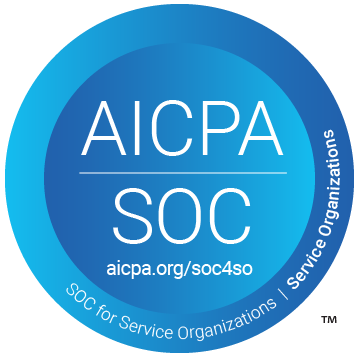In today’s fast-paced world, the insurance industry is undergoing a significant transformation. As servicing managers, servicing leadership, and chief operations officers navigate this evolving landscape, the shift from manual to digital processes stands out as a key driver of efficiency and enhanced customer experience. This article delves into the implications of automation in insurance servicing departments, highlighting the profound impact on operations and customer satisfaction.
The Drawbacks of Manual Servicing Tasks
Manual processes have long been the backbone of insurance servicing. However, these traditional methods come with inherent limitations that hinder efficiency and scalability.
- Time-Consuming Processes
Tasks such as data entry, form processing, and document management are inherently labor-intensive. Servicing professionals spend countless hours on these routine activities, diverting their attention from more complex and high-value tasks. This not only delays service delivery but also increases operational costs. - Inconsistency in Service Delivery
Manual processes are prone to variability. Different individuals handling similar tasks can lead to inconsistencies in service quality and outcomes. This variability undermines the reliability of the service provided to policyholders, affecting overall customer satisfaction. - Scalability Issues
As insurance companies grow, the volume of servicing requests also increases. Manual processes struggle to keep pace with this growth, leading to bottlenecks and longer turnaround times. Additionally, introducing new types of servicing requests or products can further strain these manual workflows.
The Benefits of Automated Workflows
Embracing automation in insurance servicing offers a myriad of benefits, transforming how operations are managed and enhancing the quality of service delivered to policyholders.
- Efficiency Gains
Automation streamlines routine tasks, significantly reducing the time required to complete servicing requests. By automating data entry, form processing, and document management, insurers can accelerate their workflows and free up resources for more strategic activities. This efficiency gain translates to faster service delivery and improved customer satisfaction. - Improved Accuracy
Human errors are inevitable in manual processes, leading to inaccuracies that can compromise service quality. Automated workflows minimize these errors, ensuring more reliable and consistent outcomes. This precision enhances the overall reliability of the servicing process, boosting policyholder confidence. - Enhanced Compliance
Regulatory compliance is a critical aspect of insurance operations. Automated systems can incorporate compliance checks and validations into the workflow, ensuring adherence to regulatory standards. This reduces the risk of non-compliance and associated penalties, safeguarding the insurer’s reputation. - Scalability
Digital workflows offer unparalleled scalability. As servicing demands grow or new product offerings are introduced, automated systems can seamlessly adapt to handle the increased volume and complexity. This scalability ensures that insurers can maintain high service standards regardless of growth.
Steps to Transition
- Assessment
The first step in transitioning to automated workflows is a thorough assessment of current manual processes. Identifying pain points and areas for improvement lays the foundation for a successful automation strategy. - Selection
Choosing the right digital tools and platforms is crucial. These solutions should align with the insurer’s business needs and integrate seamlessly with existing systems. - Implementation
A phased approach to implementation ensures a smooth transition. Focus on change management and staff training to facilitate adoption and minimize disruption. - Monitoring
Establish metrics and feedback loops to monitor the performance and impact of the automated workflows. Continuous monitoring allows for ongoing optimization and ensures that the benefits of automation are fully realized.
Conclusion
Transitioning to automated workflows is not just a trend; it is a strategic imperative for modernizing insurance servicing operations. By embracing automation, insurers can enhance efficiency, improve accuracy, and deliver higher-quality support to policyholders. This shift provides a competitive edge and meets the evolving expectations of customers in an increasingly digital world.
As the insurance industry continues to evolve, Benekiva’s automation platform stands at the forefront of this transformation, offering the tools and capabilities needed to thrive in this new era of digital insurance servicing.
* The hypothetical case study provided as an example in this blog post is hypothetical and is intended solely for illustrative purposes. The details, names, and scenarios mentioned are fictional and do not represent any real individuals, companies, or events. Any resemblance to actual persons, living or dead, or actual events is purely coincidental. This case study is used to demonstrate concepts and strategies discussed in the blog and should not be interpreted as a factual account. The information presented is not a substitute for professional advice. Readers are encouraged to conduct their own research and consult with qualified professionals before making any business decisions.
Real-World Application
Transforming Servicing Operations with Automation*
Overview: Consider a mid-sized insurance carrier facing operational challenges similar to many in the industry. This hypothetical example, inspired by real-world discussions with various insurance companies, explores how automating claims and servicing workflows can transform operations and improve service delivery.
Challenges:
- Processing Delays: Manual data entry and document management resulted in an average processing time of 12 days for claims and servicing requests.
- High Error Rates: Human errors in manual processes led to an error rate of 18%, causing delays and rework, which frustrated policyholders.
- Scalability Issues: With a 20% year-over-year growth in policyholders, the insurer struggled to scale its manual processes to keep pace with increasing servicing demands.
- Compliance Risks: Ensuring compliance with regulatory standards was labor-intensive and prone to oversight in manual workflows.
Proposed Solution:
Based on insights from our discussions with industry leaders, the proposed solution involves implementing comprehensive automated workflows across the claims and servicing departments. This includes automating data entry, form processing, document management, and compliance checks.
Implementation Process:
-
- Assessment:
- Current State Analysis: A thorough analysis of existing manual processes was conducted to identify bottlenecks and inefficiencies.
- Opportunity Identification: Key areas for automation were identified, including claims processing, document management, and compliance verification.
- Assessment:
-
- Selection:
- Tool Selection: The insurer selected a robust automation platform due to its integration capabilities, scalability, and user-friendly interface.
- Customization: The platform was customized to meet the specific operational requirements and regulatory environment.
- Selection:
-
- Phased Implementation:
- Pilot Phase: Initial implementation focused on automating the data entry and document management processes within a small pilot group.
- Full Rollout: Following a successful pilot, the automated workflows were gradually rolled out across all servicing departments, ensuring minimal disruption.
- Phased Implementation:
-
- Training and Change Management:
- Staff Training: Comprehensive training sessions were held to ensure all employees were adept at using the new system.
- Change Management: Leadership emphasized transparent communication and support to facilitate a smooth transition to automated workflows.
- Training and Change Management:
-
- Monitoring and Optimization:
- Performance Metrics: Key performance indicators (KPIs) were established to monitor the effectiveness of the automated workflows.
- Continuous Improvement: Regular feedback loops and data analysis were used to continually refine and optimize the system.
- Monitoring and Optimization:
Expected Results and Implications:
-
- Reduction in Processing Times:
- Before Automation: Average processing time of 12 days.
- After Automation: Expected reduction to 4-5 days, a 58-67% improvement.
- Reduction in Processing Times:
-
- Decrease in Error Rates:
- Before Automation: 18% error rate due to manual data entry and document handling.
- After Automation: Anticipated reduction to 4-5%, significantly enhancing accuracy.
- Decrease in Error Rates:
-
- Scalability:
- Before Automation: Struggled to scale with a 20% annual growth rate.
- After Automation: Automated workflows can easily scale to handle increased volumes, ensuring consistent service quality as the customer base grows.
- Scalability:
-
- Enhanced Compliance:
- Before Automation: Labor-intensive manual checks prone to oversight.
- After Automation: Built-in compliance checks ensure adherence to regulatory standards, reducing risk and increasing efficiency.
- Enhanced Compliance:
-
- Increase in Customer Satisfaction:
- Before Automation: Customer satisfaction impacted by delays and errors.
- After Automation: Faster processing times and improved accuracy are expected to boost customer satisfaction scores by 30-40%.
- Increase in Customer Satisfaction:
Metrics:
- Processing Time Reduction: 58-67%
- Error Rate Reduction: 72-78%
- Scalability: Capable of handling a 20%+ increase in servicing requests without additional resources
- Customer Satisfaction Increase: 30-40%






